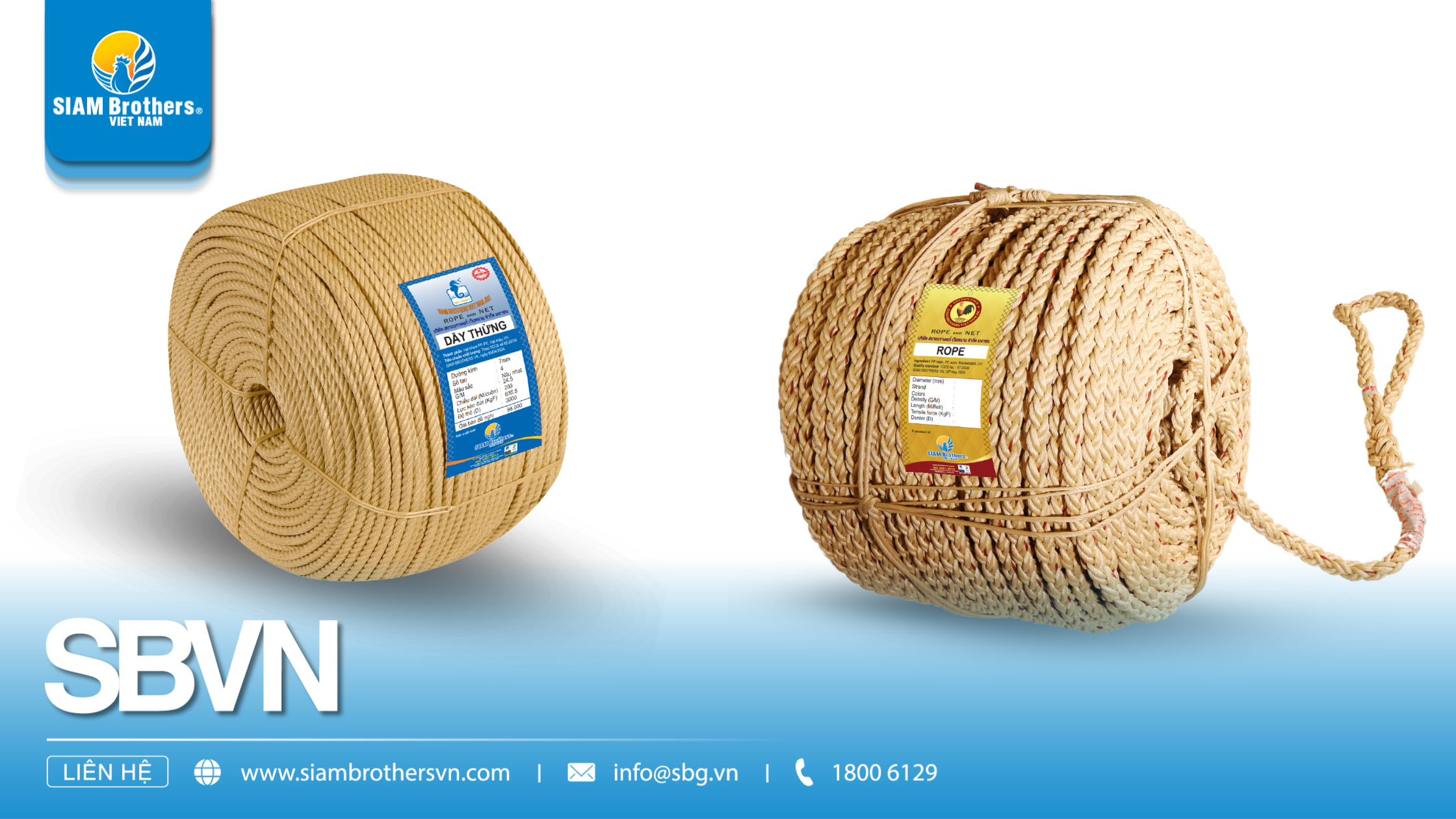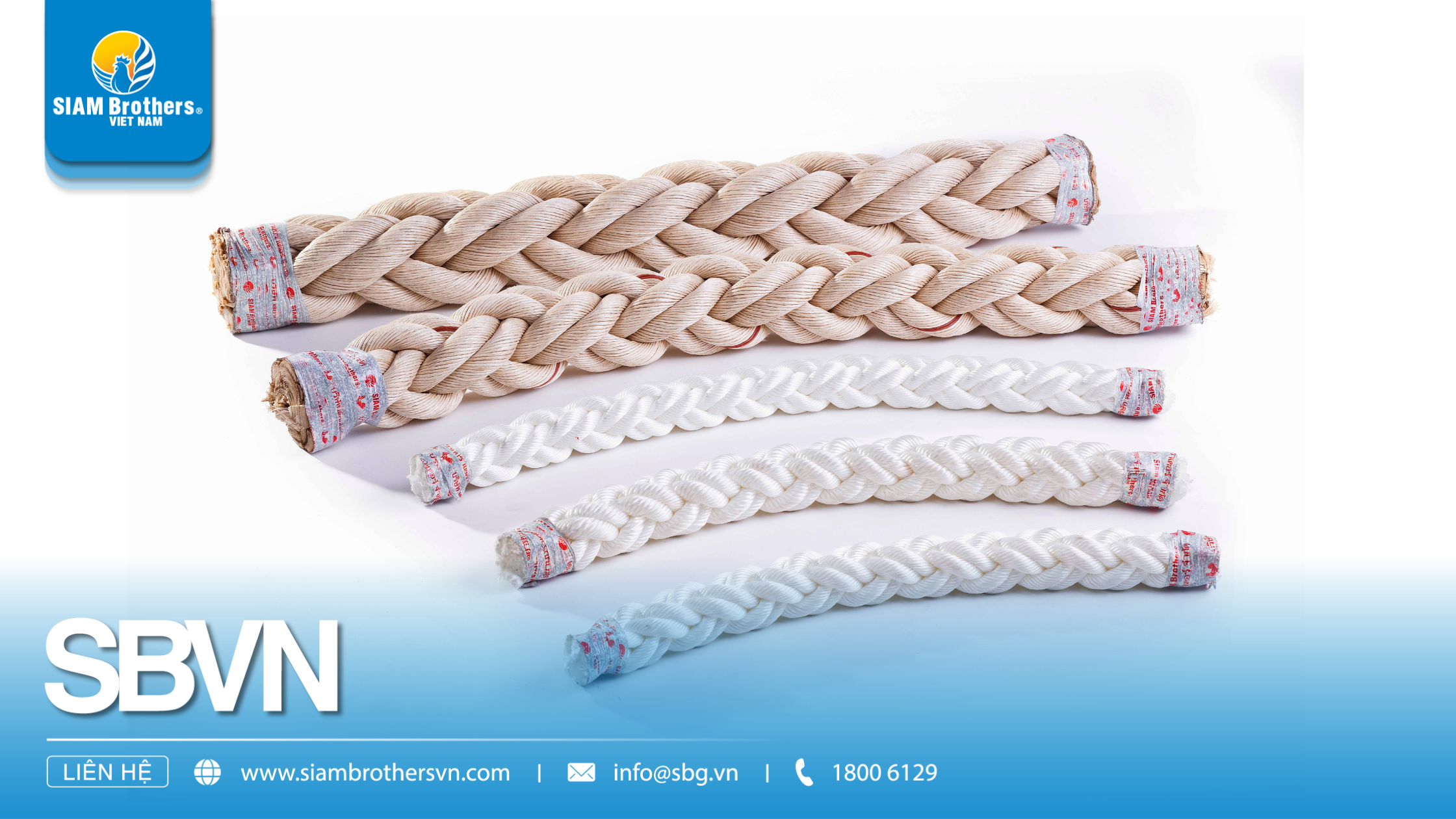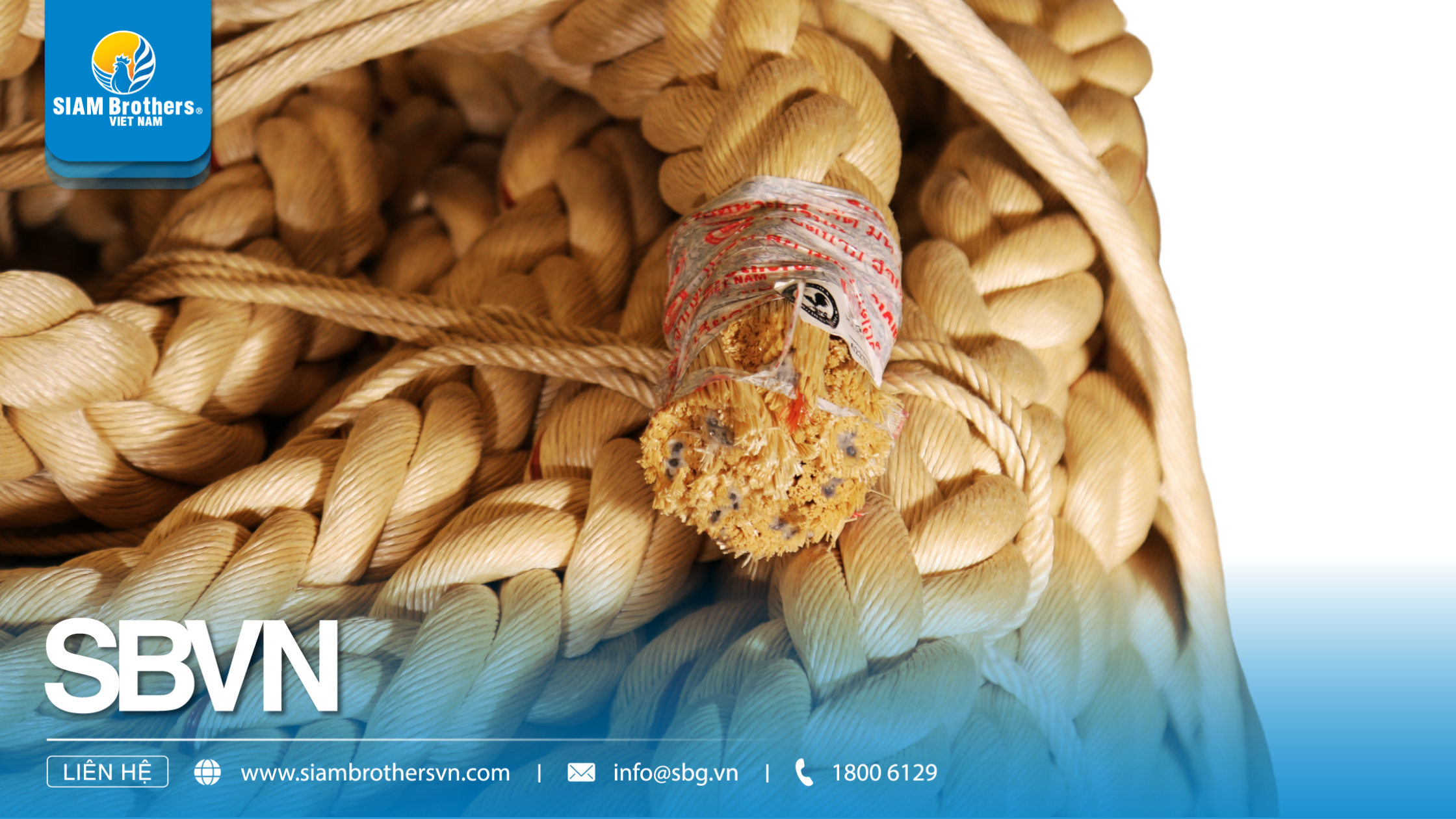Are You Sure the Rope You're Using Is Truly High-Quality? In many industries—from fishing and agriculture to logistics—a rope is more than just a tool for tying or pulling. It plays a critical role in ensuring safety, operational efficiency, and long-term cost savings. But with hundreds of rope types flooding the market, how can you tell which ones truly meet the standards of a high-quality rope?
At SIAM Brothers Vietnam, we’re here to help you uncover the 5 most important criteria to identify a high-quality rope—so you can make smarter, more sustainable, and cost-effective decisions for your specific needs.
1. Why Choosing a High-Quality Rope Really Matters
1.1 Ensures Safety During Use
- A rope bears heavy loads—especially in sectors like fisheries, agriculture, and transportation.
- Low-quality ropes are prone to rotting, fraying, or sudden breakage, posing safety risks and potential damage to assets.
- High-quality ropes are made from durable materials with excellent load-bearing capacity, minimizing workplace accidents.
1.2 Helps Reduce Long-Term Costs
- Cheaper ropes may seem like a good deal—but frequent replacements lead to rising overall expenses.
- High-quality ropes last longer, resist harsh environments better, and reduce the need for constant maintenance or replacement.
- This is a smart investment, especially for businesses that operate continuously or outdoors.

1.3 Maintains Work Efficiency and Production Schedules
- A broken rope mid-operation can halt production, delay harvests, or disrupt shipments.
- Using high-quality ropes ensures mechanical stability and long-term durability—even under demanding conditions.
- This is especially crucial in harsh environments like open seas, where equipment failure is not an option.
1.4 Adapts Well to Various Environments and Applications
- A good rope must resist water, UV rays, and chemical corrosion—particularly in marine or outdoor settings.
- Each application may require a specific rope type, but one factor remains essential: the rope must be of high quality to deliver optimal results.
1.5 Strengthens Business Reputation and Brand Image
- Even a small product like a rope can impact your brand if failure occurs.
- For businesses in aquaculture, logistics, or supply chain operations, using high-quality rope reflects a commitment to safety and quality.
2. Top 5 Criteria to Identify a High-Quality Rope
2.1 Made from High-Grade Fiber Materials
- The quality of any rope heavily depends on its core materials. Synthetic fibers such as Polypropylene (PP), Polyethylene (PE), or specialized high-grade fibers are commonly used in high-quality ropes.
- A well-made rope has a smooth, even sheen, no fraying, and no chemical odor—indicators of a well-controlled production process.
Pro tip: Prioritize ropes made from 100% virgin materials rather than recycled plastic blends.
2.2 Strong Tensile Strength and Load Capacity
- This is vital if your rope is used for lifting, tying, or pulling heavy loads.
- A high-quality rope should be tested and certified for tensile strength, ensuring it doesn’t stretch excessively or break under normal use.
- Tip: Ask your supplier for the rope’s maximum load capacity and elongation rate before purchasing.

2.3 Resistance to Harsh Environmental Conditions
- Whether under direct sun, saltwater, or exposure to chemicals—ropes in fisheries and agriculture face extreme environments.
- A quality rope should resist UV radiation, moisture, mold, corrosion, and should not become brittle over time.
- Premium ropes may also feature UV-protective coatings to extend their lifespan significantly.
2.4 Tightly and Evenly Braided Construction
- The rope’s structure reveals a lot about its quality. High-quality ropes have tight, uniform braids, no loose strands, and a consistent core.
- This uniformity helps prevent tangling, unraveling, or twisting during extended use.
Watch out: Avoid ropes with bulges, uneven thickness, or insecure joints.
- Don’t overlook the importance of proper certifications and transparent sourcing.
- Reputable manufacturers like SIAM Brothers Vietnam always provide clear documentation on quality standards, testing procedures, and warranty policies.
- Look for ropes with valid CO/CQ (Certificate of Origin / Certificate of Quality) for peace of mind.

3. Frequently Asked Questions
3.1 What materials are used to make high-quality rope?
Most high-quality ropes today are made from:
- Polypropylene (PP) fibers – lightweight, floatable, and highly resistant to abrasion.
- Polyethylene (PE) fibers – excellent tensile strength and UV resistance, ideal for outdoor marine applications.
- Nylon fibers – outstanding elasticity, strength, and friction resistance.
- These materials enhance the rope’s durability and ensure safety in harsh working environments.
3.2 How long can a high-quality rope be used?
- The lifespan of a rope depends on the environment, usage frequency, and intended application.
- On average, with proper storage and care, a high-quality rope can last 3–5 years under normal conditions.
- At SIAM Brothers Vietnam, our ropes offer extended durability thanks to strict quality control and advanced production technology.
3.3 How can I distinguish high-quality rope from low-grade rope with the naked eye?
You can identify high-quality rope by the following visible signs:
- Smooth, uniform surface with no fraying or loose strands.
- Consistent color that doesn't fade quickly.
- When pulled, the rope maintains its shape and does not crack or deform.
- Additionally, genuine products are always accompanied by clear technical specifications and certificates of quality.

3.4 Is high-quality rope more expensive than regular rope?
Initially, high-quality ropes may cost more, but they offer significant long-term value:
- Superior durability reduces replacement and maintenance costs.
- Greater performance and safety, especially in industrial and marine environments.
- If you're seeking a durable, safe, and reliable solution, investing in high-quality rope is a wise decision.
3.5 Where can I buy high-quality rope from a trusted supplier?
When purchasing rope, look for suppliers with:
- Established brand reputation.
- Direct manufacturing capabilities.
- Clear warranty and customer support policies.
At SIAM Brothers Vietnam, we proudly serve both domestic and international markets with a wide range of ISO-certified rope products tailored for fishing, agriculture, marine, and industrial applications.
Selecting a high-quality rope isn’t just about choosing a product—it’s about securing durability, safety, and performance for your operations. Whether you're working in fisheries, farming, or heavy-duty transport, overlooking even one of the five key criteria could cost you time, money, and unnecessary risks. Be a smart buyer—don’t be misled by appearance or low prices. Instead, prioritize quality, traceable origin, and the credibility of your supplier. Looking for high-quality rope that meets international standards, offers exceptional durability, and comes at a competitive price?
Contact SIAM Brothers Vietnam today—a leading brand in industrial rope manufacturing and distribution across Vietnam and Southeast Asia.
Source: SIAM Brothers Vietnam
Contact us:
Address: 5th floor, VRG Building, 177 Hai Ba Trung Street., Vo Thi Sau Ward, District. 12, Ho Chi Minh City, Vietnam
Tel: (+84) 28 38 912 889
Hotline: 1800 6129
Facebook: www.facebook.com/siambrothersvn
Email: info@sbg.vn
YouTube: youtube.com/@siambrothersvietnam1728
X: x.com/sbvnjsc
OA Zalo: zalo.me/1402339229697925373
App SBVN ID:





